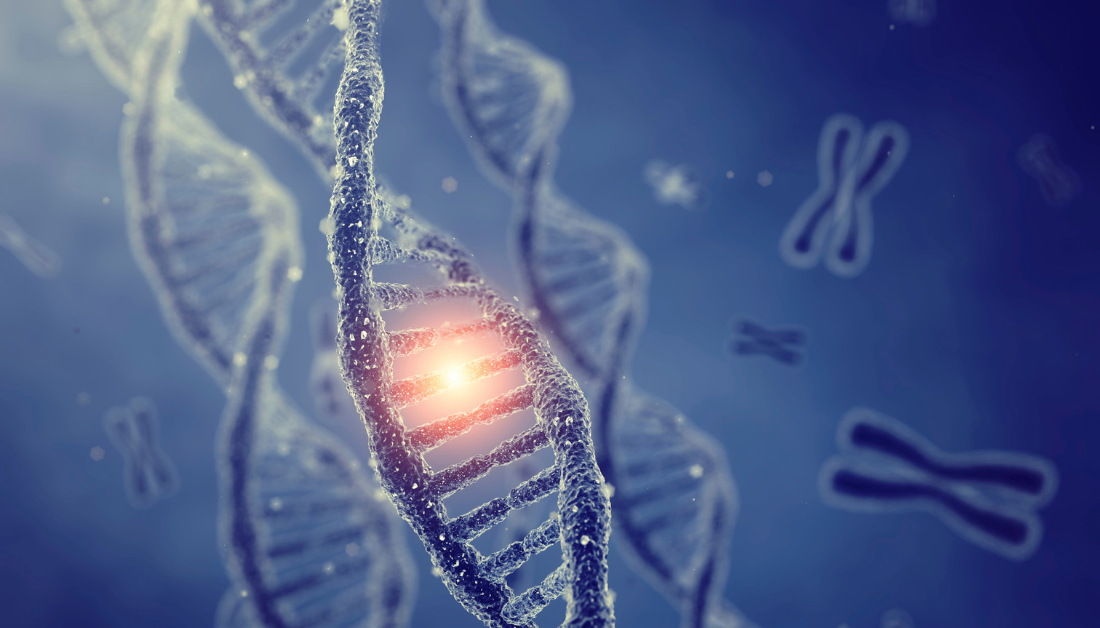

Researchers developed a pan-tumor transcriptomic and epigenetic regulation atlas using single-nucleus chromatin accessibility information and matched ribonucleic acid (RNA)–sequencing data in a recent work published in Nature.
The researchers looked at the spatiotemporal dynamics of chromatin decondensation and transcriptional machinery binding in cancer, with a particular focus on epigenetic drivers and their interactions with genetic and environmental variables.
Background
Chromosome accessibility is critical for genetic expression and cellular identity, and changes can initiate, grow, and spread cancer. Enrichment analysis can be used to identify epigenetic variables that influence genetic expression, intercellular interactions, lineage determination, and treatment resistance.
Understanding how epigenetic drivers interact with environmental and genetic variables is critical for cancer biology and therapeutic progress. The study of chromatin architecture across tumors, changes in chromatin accessibility throughout significant cancer transitions, and the relationship between chromatin availability, genetic mutations, and transcriptional patterns is critical.
About the study
Based on data from more than 200 cases, researchers created an integrated multi-omic map of 11 forms of cancer in the current study.
Over a million cells were studied from diseases such as colon cancer, pancreatic ductal adenocarcinoma (PDAC), melanoma of the skin, endometrial carcinoma of the uterus, ovarian cancer, and breast cancer.
The researchers performed single-nucleus transposase-accessible chromatin sequencing (snATAC-seq) and paired single-nucleus or single-cell RNA sequencing. Correlation was used to assess the accessibility of chromatin regions (ACR) to genes.
To better understand the transcriptional regulators involved in cancer formation and find regulatory linkages between transcription factors (TFs) and their target genes, the SCENIC single-cell regulatory network interference and clustering method was used to describe transcription factor target genes in each cancer cohort.
In the U251 GBM cell line, cleavage under targets and release was conducted using a nuclease (CUT&RUN) assay, monitoring the direct binding of nuclear respiratory factor 1 (NRF1) to target gene promoters.
TF motif accessibility scores in primary and metastatic cells from four different malignancies were compared to evaluate transcriptional pathways involved in metastasis. GATA-binding factor 6 (GATA6) activity was reduced in PDAC metastasis using genetically engineered animal models of PDAC caused by the KrasG12D mutation and Trp53 deletion.
The researchers looked into pathways with a high concentration of differentially accessible chromatin regions (DACRs), which were detected in both metastatic and original tumor samples. On 176 tumor samples, genomic characterizations of somatic mutations and copy-number variations (CNVs) were performed using accessible whole-exome sequencing (WES) data.
Results
The study discovered epigenetic markers associated with cancer transitions, some of which were seen in multiple cancers while others were disease-specific. Cancer progression was linked to epigenetically altered pathways such TP53, hypoxia, and tumor necrosis factor (TNF) signaling, whereas metastatic progression was linked to estrogen response, epithelial-mesenchymal transition, and apical junction.
Significant pathways described by differentially accessible chromatin regions (DACRs) in basic and metastatic cancer cells imply a role in metastasis. The key pathways enriched in metastases at the cohort level were epithelial-mesenchymal transition (EMT), myogenesis, apical junction, and early estrogen response.
PDAC had enhancers linked with the genes filamin B (FLNB), engrailed homeobox 1 (EN1), vimentin (VIM), and vascular endothelial growth factor A (VEGFA), indicating significant epigenetic regulation.
The expression of oncogenes such as epithelial growth factor receptor (EGFR), Ki-ras2 Kirsten rat sarcoma viral oncogene homolog (KRAS), v-erb-b2 avian erythroblastic leukemia viral oncogene homolog 2 (ERBB2), catenin beta 1 (CTNNB1), and mesenchymal-epithelial transition factor (MET) was linked to enhancer accessibility, indicating complex epigenetic regulation of these genes.
EGFR has the most enhancer-to-gene linkages in head and neck squamous cell carcinoma (HNSCC). There was a significant relationship between enhancer accessibility and gene expression, demonstrating that epigenetic and genetic variables collaborated.
Enhancer accessibility was found to be more strongly connected to transcript expression than promoter accessibility, demonstrating the relevance of enhancers in influencing gene expression. A considerable number of the ACR-to-gene links were between genes and enhancer regions, supporting enhancers’ tissue and cancer-type specificity in influencing gene expression.
The researchers also investigated the link between epigenetic and genetic drivers in tumor samples by genetically characterizing somatic mutations and copy-number variations (CNVs). Within specific pathways, correlations between epigenetic changes and genetic mutations are feasible.
Conclusion
Overall, the findings of the study revealed an atlas for epigenetic regulation throughout cancer transitions across 11 tumor types. The atlas paints a coherent picture of cell types, variable access enhancers and promoters, epigenetically regulated cancer-associated genes, and transcription factors (TFs) that are important during crucial cancer transitions.
The study focuses on the use of transcription factors as prognostic indicators and provides nuanced insights into cancer biology, such as cancer-specific epigenetic architecture, interactions between normal and malignant cells, and primary-to-metastatic alterations within the same lineage.
Differences in chromatin accessibility between primary and metastatic tumors may guide to therapeutic strategies for preventing malignant changes. The spatiotemporal dynamics of chromatin decondensation and transcriptional machinery binding are important in cancer genesis, progression, and metastasis, but we currently have a limited understanding of them.
The activation of regulatory elements or transcription factors associated with cancer initiation, progression, and metastasis, referred to as epigenetic drivers, may explain previously undiscovered tumorigenic pathways.
For more information: Epigenetic regulation during cancer transitions across 11 tumor types. Nature
doi: 10.1038/s41586-023-06682-5.
more recommended stories
 Lysosomal Function in Parkinson’s Disease Risk
Lysosomal Function in Parkinson’s Disease RiskThe genetic traits that affect the.
 Omega-6 Fatty Acid Role in Bipolar Disorder
Omega-6 Fatty Acid Role in Bipolar DisorderHigher concentrations of arachidonic acid, an.
 Transplant Drug Shows Promise in Slowing Alzheimer’s in Seizure Patients
Transplant Drug Shows Promise in Slowing Alzheimer’s in Seizure PatientsProtein imbalances, which heighten the excitability.
 Fentanyl Inhalation: Brain Damage Risks
Fentanyl Inhalation: Brain Damage RisksAfter treating a middle-aged man who.
 Enhanced Immune Response in New COVID-19 Vaccines
Enhanced Immune Response in New COVID-19 VaccinesAn improved vaccination offers an enhanced.
 Bioresorbable Wireless Sensor for Early Stomach Leakage Detection
Bioresorbable Wireless Sensor for Early Stomach Leakage DetectionIn a recent publication in Scientific.
 Neurocardiac Connectivity in Depression Treatment
Neurocardiac Connectivity in Depression TreatmentHeart rate deceleration and sadness may.
 Antioxidants: Impact on Quality of Life in Acne Vulgaris
Antioxidants: Impact on Quality of Life in Acne VulgarisA recent study published in the.
 Palliative Care Disparities for Opioid Users: Study Findings
Palliative Care Disparities for Opioid Users: Study FindingsIn contrast to individuals devoid of.
 Brain Pulsations Linked to High BMI
Brain Pulsations Linked to High BMIAccording to a new study from.

Leave a Comment